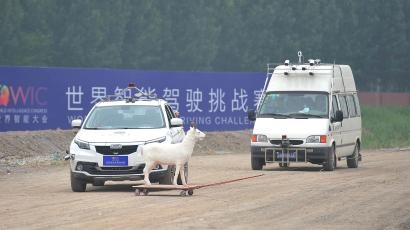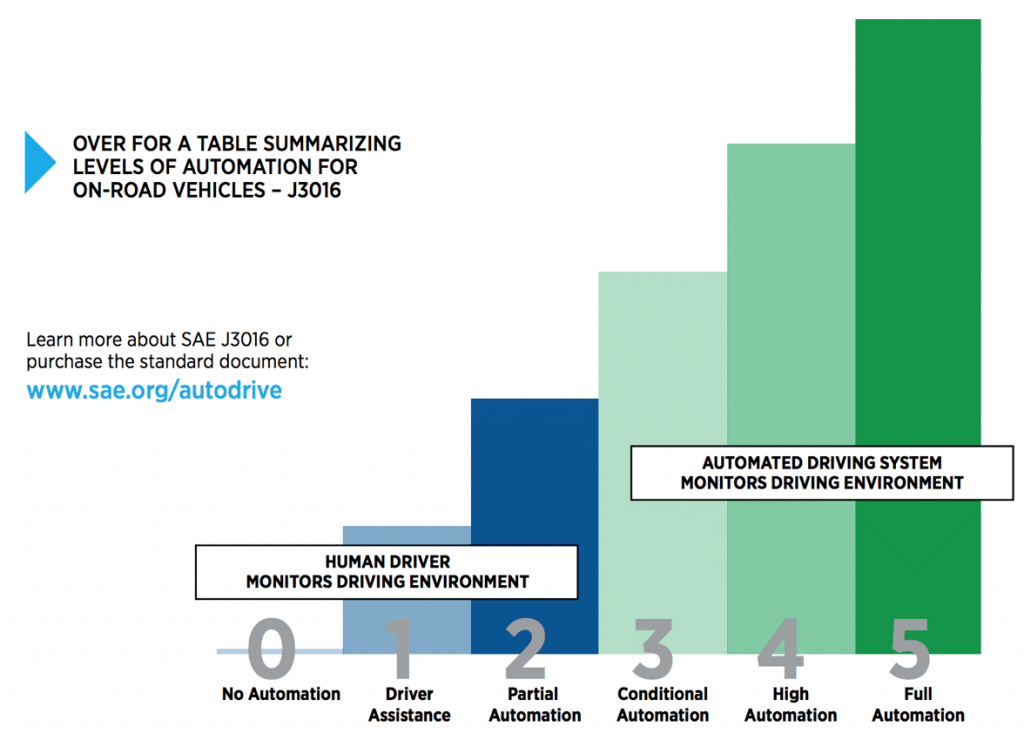There’s a new revolution coming.
In the ‘70s and ‘80s, kids chased the big money on Wall Street. The revolution was moving money.
Then in the ‘90s and 2000s, they went to Silicon Valley. The revolution was moving data.
Now we’re looking at a new revolution. Not money. Not data. It’s going to be moving people and goods.
This is the untapped edge of human development. And it will change the world.
We have digital banking and instantaneous capital markets. We have big data at our fingertips and on our devices. But we still get into cars and queue up on the motorway to get to work. Or endure the inconveniences and delays of public transport.
Transport is a huge and undisrupted industry. In 2018, transportation accounted for 9.1% of all workers in the US.
The industry is ripe for disruption. Technology and trends are afoot. For investors, this will create opportunities. For transportation workers, big changes.
Autonomous Vehicles (AVs)
If there’s one thing that will revolutionise our transport networks, it’s AVs.
Much of the technology and infrastructure is now in existence: GPS, 5G, AEB (Autonomous Emergency Braking), autopilot, ride-sharing networks. And increasing levels of automation appearing in new vehicles.
The NZ Transport Agency already has a testing process for autonomous vehicles in New Zealand.
Now most commercial uses of AVs are in geo-fenced regions or in ‘manual mode’ — where a human is in control of the driving. The technology is still very much in ‘test mode’.
Yet the scale is noteworthy. In the US alone, more than 1,400 self-driving vehicles are now in testing by 80+ companies.
In China, Beijing recently became the first city there to allow testing on public roads. In 2018, 56 vehicles from eight companies logged 150,000km.

Japan has recently altered its laws to allow self-driving cars in certain situations. For example, drivers can use smartphones in traffic jams while their vehicles are driving themselves. Provided they’re able to switch to manual immediately in case of emergency.
The key to unlocking widespread use in this industry is safety. And the technology being able to cope with the diversity of our roads. From gridlocked cities, narrow suburban streets, to long rural highways. All of which contain people.
Self-drive is a process. SAE International (Society of Automotive Engineers) has identified the progression as follows:

The gold standard is ‘Full Automation’ (in all conditions).
That’s expected to start first in ride-sharing through the likes of Uber [NYSE:UBER] and Lyft [NASDAQ:LYFT].
To date, both IPOs for these companies have been disappointing, with no uplift in value.
In my view, the real value will come when a manufacturer cracks the safety barrier. They produce and test a fully automated vehicle that meets enough standards for transport regulators to allow them on the roading network — unrestricted.
Such development would put us on a new trajectory: when driverless cars become safer than their human controlled counterparts. Currently, more than 90% of auto fatalities are due to human error.
The end result? Human-driven cars are the more dangerous option. Transport authorities favour AVs.
Meanwhile, new cars are getting cheaper. You can get a brand-new car in NZ these days for less than $20k. Once AVs go into mass production, there’ll be further ways to reduce cost. And digital printing advances are continuing to bring down the cost of componentry.
The AV revolution could look like the advent of the mobile phone.
Suddenly you have a connected device to serve you. One you may end up replacing every few years as the technology continues to advance and become cheaper.
What does an AV world look like?
The roads fill with more and more self-drive cars…
You can guarantee when you step out on a pedestrian crossing, they’ll stop for you. And their speed will be confined to area limits.
I’m imagining suburban streets operating more and more like sushi trains.
But there will be more cars on the road. Personal and safe self-drive would allow for many people not currently able to drive — children, the elderly, sight-impaired — to own a vehicle and be driven.
I’ve long had a love affair with the car. Especially turbocharged models.
In Europe, we had a Mercedes Kompresser. Just magic on the French motorways! These days, a turbocharged Alfa Romeo.
I enjoy driving.
Would self-drive be just another part of the modern world that curtails joy and freedom?
I don’t see that happening. A trip downcountry — take the sports car, pull down the top, and keep it in manual mode. The roads are likely safer, since many of your fellow drivers are now calibrated robots — under the influence of no other substance but electricity or petrol.
But around town, this is where self-drive comes into its own.
I spend an inordinate amount of time on short ‘chore trips.’
Take my daughter to ballet. Pick up my daughter from ballet. Try to squeeze out some work in the gap.
Drive the car to the supermarket, or for a wash, or to buy some skiing gear.
Many of these tasks can be programmed. Order the groceries online. Send the car autonomously to the pickup bay, where a supermarket worker loads in the groceries.
Get an alert that the car needs a service. Click ‘Approve’ on the app to schedule the proposed visit to the workshop. The car takes care of that on the specified time and day. While I’m at work. Returning to the driveway when done.
Meanwhile, self-drive tech on motorways allows the flow of traffic to speed through. Cars in congested situations can act more like train carriages…rather than singularly frustrated individuals looking for a gap.
Public transport
So much political focus has gone on this philosophy: ‘Get people out of cars — put them on public transport.’ Some governments seem anti-road.
This flies in the face of the coming AV revolution.
Over more than a century, we created roads for horse and buggies, and then updated them for cars. Our most convenient transport networks are based on roads.
While overlays of train and subway routes help alleviate these roads — and are essential in dense cities, they do little for the wider population in regions.
I’m not a fan of public transport. It never seems to go exactly where you want or at the time you wish. It can be late or cancelled altogether. And you must share crowded units with strangers, some of whom may be murderers or rapists.
OK, that’s a bit unfair. There are some fine and pleasant services — such as the ferry I take to the office. And there’s the wider question of greenhouse gases. Unless AVs combine their technology with low or no emissions, they’ll also add to the threat of global warming.
New Zealand infrastructure
I read with dismay our government’s response to the recent Prime Minister’s Advisory Council report that our infrastructure is at a ‘crisis point’. They appear to have no appetite for improving the roading network — suggesting putting big money into roads is bad policy.
And once again they miss the coming investment revolutions of our age. AVs requiring an expanded roading network. Businesses requiring lower taxes and compliance so they can invest, employ and transition. Using migration to fill shortages — rather than soaking in too many people to make numbers look good.
Where to invest?
All-new Tesla [NASDAQ:TLSA] cars already have autopilot in their hardware. Providing some autopilot features today with the potential for full self-driving capabilities through software updates in the future.
Yet, Tesla is a comparatively niche manufacturer which has experienced a bumpy ride in the markets. I don’t see it having the breadth to embrace the wider vision for our roads. One of zero crashes, zero emissions and zero congestion.
In my new publication, I will soon divulge my research into one listed company I’m watching. One I believe will be a key leader in paving the way to the self-drive revolution.
As we stand today, I don’t believe this potential is priced into their stock. Yet.
My research into that business is due out in Lifetime Wealth Investor soon. Do explore this inner circle newsletter here.
For now, I’m starting to be more mindful of every car journey I make.
How would this change if I had a self-driving AV, able to get around with or without me?
And perhaps at some point, I’ll be writing you from my car. And you’ll be reading in the comfort of yours.
Regards,
Simon Angelo
Editor, WealthMorning.com





Simon is the Chief Executive Officer and Publisher at Wealth Morning. He has been investing in the markets since he was 17. He recently spent a couple of years working in the hedge-fund industry in Europe. Before this, he owned an award-winning professional-services business and online-learning company in Auckland for 20 years. He has completed the Certificate in Discretionary Investment Management from the Personal Finance Society (UK), has written a bestselling book, and manages global share portfolios.